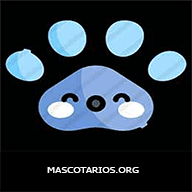The Aidi is highly energetic, protective and extremely vigilant. Despite its resemblance to Sheepdogs, The Aidi is not one of them because there are no sheepdogs from the Atlas.
Group 2 / Section 2.2
▷ The world of Pets: Dogs, cats, birds, reptiles, amphibians
Aidi – Atlas Mountain Dog
▷ The world of Pets: Dogs, cats, birds, reptiles, amphibians
Yugoslavian Shepherd Dog Sharplanina  FCI 41 - Molossoid . Mountain
FCI 41 - Molossoid . Mountain
Content |
|---|
History
As it is the case with many breeds, the true origins of this big guy are unknown, although there are theories that try to approach them. Some authors raised that their ancestors were the ancient molossians, especially dogs from Greece and livestock guarding dogs from Turkey.
Other authors believe that the Yugoslavian Shepherd Dog Sharplanina, drift of Asian dogs that arrived in Europe accompanied by migration of peoples who were engaged in raising them. This theory is the most widely accepted today..
The race was initially recognized by the Federation Cynologique Internationale (FCI) in 1939 under the name Illyrian Shepherd Dog, demonstrating the ancient name of the native region of these dogs.
In 1957, at the request of the Yugoslav Canine Federation (JKS), the FCI changed the name to Yugoslav Shepherd Dog–Yugoslavian Shepherd Dog Sharplanina, because it is in the Šar Mountains (Šar Planina in South Slavic languages, is a mountain range located on the southern border of Serbia in the province of Kosovo and in the northwestern part of the Republic of Macedonia), where is concentrated the largest number of specimens of the breed.
If there is something indisputable it is that the Yugoslavian Shepherd Dog Sharplanina, lives since ancient times in the mountainous regions of the former Yugoslavia, from where it has spread throughout the Balkan Peninsula and recently, beyond these borders.
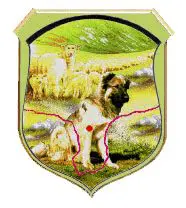 The image of the Yugoslavian Shepherd Dog Sharplanina appears on the obverse of the coin 1 Denar, issued in the Republic of Macedonia in the year 1993, and is also the emblematic protagonist of the Dragaš shield, a city in the South of Kosovo, which is located in the region of the Šar Mountains.
The image of the Yugoslavian Shepherd Dog Sharplanina appears on the obverse of the coin 1 Denar, issued in the Republic of Macedonia in the year 1993, and is also the emblematic protagonist of the Dragaš shield, a city in the South of Kosovo, which is located in the region of the Šar Mountains.
The Yugoslavian Shepherd Dog Sharplanina has reached the ranches of North America as an esteemed sheepdog and cattle guardian. Predator problems have been greatly diminished once a Yugoslavian Shepherd Dog Sharplanina , takes the responsibility of a herd. You are one of the few dogs that can chase away a wolf or bear.
Physical characteristics
The Yugoslavian Shepherd Dog Sharplanina, is a large size dog, It is quite above average when it comes to large breeds. It is also robust and equipped with a strong Constitution.
The height males average is of 56 to 62 cm and females is of 54 to 58 cm.. The length of the body is slightly greater than the height at the withers.
Although some authors speak of the existence of individuals whose actions were between 75 and 85 cm. of height and a weight of 65 to 100 kg.
– The huge head is proportional to the body, It has the skull slightly convex and slightly longer than the muzzle.
– The eyes of the Yugoslavian Shepherd Dog Sharplanina they are almond-shaped and chestnut-colored (light or dark), transmit an expression of serenity but the look is penetrating.
– The ears they are medium-sized, flat and hang on the cheeks.
– The tail It is long and Sabre-shaped, if it is in a state of alert, it carries it high, barely exceeding the line of the back.
– The fur It is long in some parts of the body and short in others. In the head, the ears and the anterior part of the extremities, is short. The length of the neck, the body and the back of the limbs and tail, is long.
– Regard to the the fur color, all uniform colors are supported but it is preferable to be gray iron and gray very dark. As well, at the top of the head, the neck and the trunk have darker hair.
Character and skills
The Yugoslavian Shepherd Dog Sharplanina it is silent, active and very protective, extremely bright, but very independent. It is an extremely good watchdog, and very reserved with strangers. The Yugoslavian Shepherd Dog Sharplanina they are calm sheepdogs, very smart, which is why, wisely, they choose their friends, trust no one too fast. They are naturally fearless defenders of the pack, as well as his master and his property, so everything he considers his property is jealously and unconditionally guarded. This is a dog with character and very dominant that requires work.. If we just want this dog to be a companion, constant professional education from an early age is essential.
The animals that live with him on the farm will be under his protection and there is no need to fear for them.. But, does not tolerate strange and unknown animals, often aggressive, and the same problems can happen with smaller pets, that can be seen as prey.
She will get along well with the children she will be together with from an early age, will be devoted and protective of them, and you may consider children you don't know as uninvited guests, so we must be very careful. You must be especially careful with younger children, since he will watch over them all the time due to the shepherd's instinct, but if the children want to get away, will drag them back, so you can injure them without realizing it.
Observations
Similar to the Caucasian Shepherd Dog –that is very much– has a temperament more characteristic of a guard dog than a herd dog.
Let us not forget that this agility, He was selected to defend the herds of the attack of wolves that were previously very numerous in their homeland.
It is necessary that the owner of this dog is a person responsible and very conscious of the copy that is in charge of, the Yugoslavian Shepherd Dog Sharplanina, It has a specially developed and powerful teeth, It can be a real danger if the dog is not given a correct and healthy education.
Education “Yugoslavian Shepherd Dog Sharplanina”
This is not a suitable dog for beginners. He is very suspicious and incorruptible. Usually, is completely loyal to a single owner. Education must be clear, consistent and should be carried out from the first meeting with the puppy. Early socialization is mandatory. With an inadequate education, this dog can become uncontrollable, very aggressive, dangerous even to the owner.
Required activity
These dogs really need a lot of exercise. If the dog goes to work on a farm, will meet your daily career needs while working, otherwise, need a longer walk or daily run.
Suitable environment
This is a dog suitable exclusively for outdoor life. You will feel better on a farm or in a larger rural fenced yard because you will be able to run freely and perform your primary role as a sheepdog..
Care “Yugoslavian Shepherd Dog Sharplanina”
Your care is not too demanding. Thick hair just needs brushing once in a while, once a week will be enough, except when you change your coat that more frequent brushing is recommended. As with other dogs, this breed also needs to clean their ears, eyes and shorten their claws.
Health “Yugoslavian Shepherd Dog Sharplanina”
No known genetic health problems, it is considered a relatively healthy breed. As with other large breeds, hip dysplasia can occur in this breed.
Images “Yugoslavian Shepherd Dog Sharplanina”
Videos “Yugoslavian Shepherd Dog Sharplanina”
Type and recognitions:
- FCI CLASSIFICATION:
- Group :
- Section : . .
Federations:
- – FCI – Pinscher and Schnauzer-Molossoid type dogs – Swiss Mountain Dogs and Cattledogs. Section 2.2 Molossoid, mountain type. ⓘ
- – CKC – Miscellaneous list ⓘ
- – UKC – Watchdog ⓘ
FCI breed standard "Yugoslavian Shepherd Dog Sharplanina"
Alternative names:
1. Illyrian Shepherd Dog, Šarplaninac (English).
2. berger yougoslave, charplanina, charplaninatz berger albanais, sarplaninac (French).
3. Šarplaninac, Jugoslovenski Ovčarski Pas – Šarplaninac, Jugoslawischer Hirtenhund – Šarplaninac, Illyrischer Schäferhund (German).
4. Šarplaninac, Charplaninatz, Sarplaninac (Portuguese).
5. Charplaninatz, Perro ovejero ilirio, Perro pastor ilirio, Perro montañés de Serbia, Perro pastor de Serbia, Perro montañés macedonio, Perro pastor macedonio, Šar Planinac (o Šar Planinec), Perro pastor yugoslavo, Perro montañés yugoslavo (español).
▷ The world of Pets: Dogs, cats, birds, reptiles, amphibians
Hovawart  FCI 190 - Molossoid . Mountain
FCI 190 - Molossoid . Mountain
Content |
|---|
History
The dog as guardian of the house and the courtyard has an ancient tradition in the history of humanity. Maybe thousands of years ago, private ownership of the house and yard, goods and workshops could only be established with the help of the protective role of dogs. The four-legged court guards were already highly regarded by the Teutons, which is reflected in the various laws of the last Teutonic. Of the 24 articles of the Law of Baiuvariorum, an entire article is dedicated only to dogs. Here, plus a dozen other dog breeds, the court dog is explicitly mentioned as “Houvavart”. The Houvavart was valued at 3 shillings. It was a huge amount, if you consider that in the same body of law a horse “mediocre” was valued at only half a shilling. The Hovawarts are also mentioned in various writings from the Middle Ages.
The Hovawart Today is in the intellectual and functional tradition of these old court dogs. Regarding their genetic offspring, will not be more or less related to them than the other breeds of guard dogs and native dogs. Building a direct line of descent to the old Hovavart would not be permissible, especially since it is not known at all what these dogs looked like.
After 1910 the Hovawart but without a description of the appearance. Over the years 20 established itself as a breed of dog.
In the FCI breed standard of 1998 It is said that:
“Since 1912 the reproduction of this breed has been using similar type dogs that are still in farms to restore the breed. apart from this, at the beginning of the crossing, you cross them with German shepherds, Newfoundland, Leonberger and other races were admitted. In addition to the strict measures taken in the breeders, the type of work was obtained again.”
It also, crossed the hungarian watchdog Kuvasz, what is important to understand the nature of Hovawart. After having almost died out, after the first world war, the breed was recovered by the kinophile K. F. König. In a span of time, what had been done very successfully thousands of years before was rebuilt here. Like, but mostly of the nature the right dogs were mated. The decisive criterion was performance for the intended purpose, so to speak, the work championship. It is quite possible that the Hovawart current look like the old ones Hovawart of our ancestors by this procedure of appearance and nature, but that is speculation. Only in 1944 breeding book closed. So a vast gene pool was created as the basis for this breed of dog., which is still very useful for your health and fitness today.
Physical characteristics
The Hovawart is a big dog, strong and at the same time quite thin. With the Hovi nowadays three strokes of color are allowed: Rubio, black marks (black with gold brown markings) black and white. Males have a height to the cross of 63 to 70 cm.. Considering its type and size, the Hovawart is thinner than it appears underneath its medium long wavy coat. So, a weight of 30 to 45 kg is considered normal for males. Despite this not so high weight, it is a very powerful and strong dog. Only for its strength and size it belongs to a hand with experience in dogs. The Hovawart he's a working dog, Guard and protection.
Character and skills
The character of Hovawart demands a person with a strong dog mind. He has a strong will, a head of its own and is very independent. Probably an heir to the pack guard dog, Kuvasz, who is one of his ancestors. He is self-assured and self-assured at the same time. The “desire to please” not as strong on him as on many other working dog breeds. Your master or caretaker still has to work and earn it. then a Hovawart well educated he is an extremely efficient off-roader and a lovely friend. Master the role of companion dog suitable for everyday life, as well as your challenges in dog sports or even as a rescue and tracking dog. He has a very good nose. Yes, and the Hovawart it is also an excellent watchdog and protection dog.
He is a defensive protector of his family and diligently protects his territory. He moves silently on the ground and faces an intruder suddenly but persistently. With built-in yard dog, the Hovawart not fully occupied, especially since today you have to monitor hardly a large enough area. He is intelligent and seeks true association with his caregiver. At the same time it is affectionate and sensitive and at the same time it radiates something primitive, archaic.
Wants and seeks connection with family. Like a well-behaved and demanded working dog, the Hovawart it is also an excellent family dog. Often rejoices with petting and hitting like a little lapdog. He is very friendly and gentle with the people he has taken to his heart. Once you meet them, will never forget them. When he is young he shows his affection sometimes very stormy.
The Hovawart it is a low maintenance dog. Apart from the change of coat, it does not need to be brushed every day., because her coat doesn't tend to tangle due to the small amount of undercoat. Well educated and managed he is an excellent companion. But, cannot be recommended as a family dog ​​without further ado. If you are thinking of having a puppy Hovawart for the first time, must first consider practical challenges, they are only related to their strength and size. Not a beginner dog.
Hovawart Education
The Hovawart develops creativity and perseverance to realize his ideas about the world and its order. Here the owner of the dog is challenged with all the consequences, but paired with patience and empathy. And this already with the puppy. Hardness alone does not help the Hovawart at all. It is important to create and maintain trust, that the Hovawart wants to show his pack leader. By the way, pack leader: One Hovawart usually test thoroughly, who will take this position. Here its owner must assert himself with the consequent insouciance, then he will follow faithfully and with good behavior and accept the leadership of his humans without problems.
One must bring with him time and knowledge for an intensive education and, the best of all, training. If one loses the basic elements of education, you will hardly be able to go for a walk with him without stress. Then your self-confidence could even become a leadership statement.. Otherwise, the Hovawart it's the ideal companion dog image. He wants his humans to guide him, but without ever being submissive. The Hovawart maintains its own head and its own will. For some people this is perhaps too much of their own personality. But only this profile of the Hovawart can be an excellent basis for a respectful and intense human-dog relationship.
Hovawart Health and Care
The Hovawart it is a low maintenance dog. Except in times of coat change, twice a year, needs to be brushed regularly but not every day, because his coat does not tend to tangle due to the low amount of undercoat.
The Hovawart it is considered a completely healthy breed. Hereditary diseases are systematically fought, such as knee joint cartilage disease (OCD), which is more common in Hovawarts. Dysplasia of the hip joint (HD) “often a problem especially with large dogs” has been under control for a long time.
Nutrition / Food
The Hovawart they don't make any special demands. He is consistently straightforward. For a dog of its size and strength it needs little food.
Hovawart life expectancy
The Hovawarts can reach 12 years and not rarely even more with a good physical condition. It is a good life expectancy for such a large dog.
Buy a Hovawart
Puppies should only be purchased from an FCI registered breeder. For a puppy you should plan to 800 to 1000 EUR. The adult dogs of Hovawart they can also be taken out of shelter or emergency aid and offered a loving home..
Images "Hovawart"
Photos:
1 – Hovawart by https://pixabay.com/es/photos/hovawart-perro-perro-de-raza-pura-2611448/
2 – Hovawart black and tan by Faigl.ladislav / CC BY-SA
3 – Hovawart by https://pixabay.com/es/photos/perro-hovawart-negro-marrón-1194081/
4 – The three permitted colours of the Hovawart by Oxborrow / Public domain
5 – Blond Hovawart female (10 months) by Faigl.ladislav / CC BY-SA
6 – Hovawart by https://www.pxfuel.com/es/free-photo-xxpba
Videos "Hovawart"
Type and recognitions:
- FCI CLASSIFICATION:
- Group :
- Section : . .
Federations:
- – FCI – Pinscher and Schnauzer-Molossoid type dogs – Swiss Mountain Dogs and Cattledogs. Section 2.2 Molossoid, mountain type. ⓘ
- – AKC – FSS ⓘ
- – CKC – Group 3 – Working dogs ⓘ
- – KC – Working dogs ⓘ
- – UKC – Watchdog ⓘ
FCI breed standard "Hovawart"
Alternative names:
1. Hovie (English).
2. Hovawart (French).
3. Hovawart (German).
4. Hovawart (Portuguese).
5. Hovie (español).
▷ The world of Pets: Dogs, cats, birds, reptiles, amphibians
Rafeiro of Alentejo  FCI 96 - Molossoid . Mountain
FCI 96 - Molossoid . Mountain
Content |
|---|
History
The Rafeiro of Alentejo (Alentejo Mastiff), as the name reflects, comes from the Portuguese region of Alentejo, extending south of the Tagus River to the Algarve. The pedigree dog, that within the FCI belongs to the Group 2 (Molossoid), Mountain Dogs subsection, has a long history as a herding dog. Although little is known about the exact origin of this rare breed, their parents are supposed to be found in the molossian dogs of the Middle East. The Estrela Mountain Dog (Star Mountain Dog), also from portugal, was probably also involved in its origin.
In the Alentejo lowlands, shepherds used the Rafeiro of Alentejo to herd and drive cattle. It also, the intrepid four-legged friend protected the flock entrusted to him by reliably avoiding attacks by wild animals or rustlers. Especially at night the Rafeiro of Alentejo defended his flock to the blood. The wealthy large landowners appreciated the imposing dog not only as a vigilant protector, but also as a status symbol of strength and power.
As industrialization advanced and the large latifundia decreased, the rafeiro it got weirder. In the early 20th century, dogs of this type were almost extinct. But, a small circle of enthusiasts ensured that the breed was preserved. In 1940 a first breed standard was established. 14 years later, the Fédération Cynologique Internationale (FCI) finally recognized the breed.
Physical characteristics
When the Rafeiro of Alentejo, cattle thieves and wild animals quickly flee: Who would want to mess with such a big and powerful dog?
With a height at the withers of up to 76 cm and a weight of approximately 50 kg, the Portuguese breed dog has a very striking appearance. His massive head and strong, muscular body give a defensive impression.. Look calmly at your opponent with small brown eyes, between which there is a slight groove, but nothing escapes your watchful eye.
Despite its bulky shape and somewhat heavy and slow gait, the body of the Rafeiro of Alentejo seems to be rather long than wide. The neck offers a good transition to the shoulder, the back is straight. The tail is well furnished and thickened at the base, rather low and forms a slight upward curve when excited. In rest position it reaches to the hock. Ears of the Rafeiro they are medium in size and fall to one side when folded.
The dense and smooth coat of the Portuguese Sheepdog is short to medium length and has abundant undercoat, giving you reliable protection in all weather conditions. The Rafeiro of Alentejo it is available in black, gray wolf, leonado or yellow with or without white spots. A white base color with yellow spots is also allowed., as well as brindle specimens according to the breed standard.
Character and skills
At night, the Rafeiro of Alentejo he is in his best moment: nothing escapes your watchful eye, his good sense of smell and his excellent ears. Anyone who dares to enter their territory is captured without notice and, if required, wholesale. Pastors who have a Rafeiro they no longer have to fear rustlers or poachers.
Like a purebred dog, whose sole task is to accompany and protect his family, the Portuguese breed dog is completely unsuitable. Although he is faithful and loyal to his family, his innate sharpness is difficult to control even with consistent upbringing. After all, the intelligent and self-confident Rafeiro of Alentejo has always been used to working and acting independently. But, the will to subordinate and obedience are not among its strong points.
Who wants to keep a Rafeiro of Alentejo You must be able to offer him a large territory in which his watchful and protective instinct can live according to his mood. This does not mean, of course, that one should just let this dog go. A responsible owner socializes and educates his dog from the beginning. Shows you clearly who holds the reins in your hand and where your limits are. At the same time, he also accepts that his four-legged friend needs his freedom. The Rafeiro will never become a “good lap dog”.
Buy a “Rafeiro of Alentejo”
Those interested in a Rafeiro of Alentejo Purebreds sometimes have to go a long way to find a suitable breeder. But, people who want to buy this dog on a whim, should refrain from buying it. The Rafeiro it is and continues to be an excellent herd dog and should be kept in that context. Who wants to make it a suitable companion dog for the family, You are not doing yourself or the dog any favors..
Health and life expectancy of “Rafeiro of Alentejo”
The typical diseases of the breed are hardly known due to the low propagation of the breed. The Rafeiro it is a very robust dog whose life expectancy is comparatively high, of 12 to 14 years. But, like all dogs of their size and format, You may also have joint problems such as hip joint dysplasia or elbow dysplasia.
The diet of the “Rafeiro of Alentejo”
In principle, this breed has no specific dietary needs. But, a balanced and healthy diet is, of course, also important for this dog – also or especially regarding possible joint problems. So, following the high energy puppy diet, a fairly low protein food should be given first to prevent the young dog from growing too quickly. In the adult dog, the energy value of the food can increase again. Now, fresh meat, through which the necessary amount of animal protein is absorbed, should mainly fill the feeding bowl. Fresh vegetables and rice are suitable as a healthy garnish. Fish can be given as an alternative to meat.
Characteristics "Rafeiro of Alentejo"
Coexistence is important that you have with your new friend. Before considering the acquisition of a dog of the breed "Rafeiro of Alentejo" you know certain factors. Not all breeds of dogs are apt to live in an apartment, you must take into account his character, their need for exercise, their interaction with other pets, their care and if you have small children, their level of tolerance towards them.
Adaptation ⓘ3.0 out of 5 stars (based on 1 review)
|
friendly dog ⓘ2.0 out of 5 stars (based on 1 review)
|
hair loss ⓘ3.0 out of 5 stars (based on 1 review)
|
|---|---|---|
Affection level ⓘ4.0 out of 5 stars (based on 1 review)
|
Need for exercise ⓘ3.0 out of 5 stars (based on 1 review)
|
Social need ⓘ1.0 out of 5 stars (based on 1 review)
|
Home ⓘ3.0 out of 5 stars (based on 1 review)
|
Toilet ⓘ2.0 out of 5 stars (based on 1 review)
|
Friendly with strangers ⓘ2.0 out of 5 stars (based on 1 review)
|
barking ⓘ4.0 out of 5 stars (based on 1 review)
|
Health ⓘ3.0 out of 5 stars (based on 1 review)
|
Territorial ⓘ5.0 out of 5 stars (based on 1 review)
|
Cat friendly ⓘ2.0 out of 5 stars (based on 1 review)
|
Intelligence ⓘ4.0 out of 5 stars (based on 1 review)
|
Versatility ⓘ1.0 out of 5 stars (based on 1 review)
|
Child friendly ⓘ3.0 out of 5 stars (based on 1 review)
|
Surveillance ⓘ5.0 out of 5 stars (based on 1 review)
|
joy ⓘ1.0 out of 5 stars (based on 1 review)
|
Type and recognitions:
- FCI CLASSIFICATION:
- Group :
- Section : . .
Federations:
- – FCI – Pinscher and Schnauzer-Molossoid type dogs – Swiss Mountain Dogs and Cattledogs. Section 2.2 Molossoid, mountain type. ⓘ
- – AKC – FSS ⓘ
- – UKC – Watchdog ⓘ
FCI breed standard "Rafeiro of Alentejo"
Alternative names:
1. Rafeiro do Alentejo, Alentejo-Mastiff, alentejo mastiff (English).
2. mâtin de l’Alentejo, mastiff de l’Alentejo (French).
3. Rafeiro do Alentejo, Rafeiro, Alentejo-Mastiff (German).
4. Mastim Português, Mastim do Alentejo (Portuguese).
5. Mastín del Alentejo (español).
Photos:
1 – Rafeiro of Alentejo by https://brit-petfood.com/hr/node/8006
▷ The world of Pets: Dogs, cats, birds, reptiles, amphibians
Landseer 

 FCI 226 - Molossoid . Mountain
FCI 226 - Molossoid . Mountain
Content |
|---|
History
The Landseer was created together with Newfoundland on the east coast of Canada. The great island of Newfoundland, located off the coast of Canada, gave his ancestors his name. Just 100 years the ways of Landseer they separated from those of Newfoundland. The reason was that they wanted to keep their skin color black and white.. More on this later. Who descended from the dogs of the Vikings of pre-Columbian times, from Spain or from the dogs of the Indians, are legends that remain untested. But, according to the current genetic map of canine breeds prepared in 2017 by an international group of researchers led by Heidi G. Parker, there is a close relationship with the recuperators, What, like the Labrador, come from the same area. Probably the ancestors of the Landseer or Newfoundland arrived in North America with the first European settlers.
The big dogs proved to be important helpers for fishermen and sealers in the cold waters of the North Atlantic., and were also occasionally useful in hunting bears and big game. It also, landowners or Landseers they carried loads and even as a draft dog they are said to provide exceptional services. Working with fishermen in extremely harsh weather was very demanding. The Landseer had to think, had to do heavy work on the networks, saved the lives of the castaways over and over again. In this way he developed the peculiarities of his being and his physique.. He accomplished amazing things in the service of humanity. The Landseers or landowners came to England over and over again with cod ships as early as the 18th and early 19th centuries. Here he became famous very early for his impressive achievements.
The famous poet Lord Byron put in 1808 your dear boatswain Landseer an impressive monument. He had the words engraved on his tombstone: “Here rest the bones of those who possessed beauty without vanity, strength without exuberance, courage without savagery, and all the virtues of man without his vices”. Here the greatness of character of these dogs is expressed, that can still be experienced today. The painter Sir Edwin Landseer immortalized his Newfoundlands black and white in oil several times around 1830. There is some evidence that dogs documented as Newfoundland Oh ya en Canis Earth News 1700 were predominantly black and white and that it was only later that the pure black or brown dogs that are typical of Newfoundland today. The black and white guy went out of style in England. But, Swiss and German cynologists and breeders brought the last good dogs from England and built a continental European breed.
To save these black and white dogs from Newfoundland, they were declared their own race around 1900, named after their famous painter “Landseer“. So this ancient type of dog with a great history was preserved for the world of dogs.. Since then, the Newfoundland and Landseers are raised separately. Later it is said that Kuvasz and Pyrenean Mountain Dogs were crossed to stabilize the white color of the soil.
In 1960 the Landseer (continental-european type) was officially recognized by the Fédération Cynologique Internationale.
Physical characteristics
According to the breed standard of the Landseer, You must give the impression of being a but powerful and well balanced. The legs are relatively longer than the black Newfoundland. The back is straight and strong. The hind legs and shoulders are muscular.
The upper layer must be long and as straight as possible, very dense and soft to the touch. The main color of the layer is white with various patches black in the rump, the neck, backsplash, belly, legs and the tail should be white.
The head should be black with the white snout and symmetric white extends from the snout to the head, ending with the white collar. It has a distinctive shape with a noble facial expression. The ears are medium-sized and eyes should be dark brown. the size of the Landseer will of 67 to 80 cm., and at birth weigh between 500 to 750 grams and at the age of 1 year can be reached despite 50 to 60 kg.
Like all mastiff-type breeds, the Landseer It is also grown very fast during its first year. Therefore one must be careful with the exercise, because if it becomes sedentary can suffer from overweight.
Landseer video
Lightbox for Video by VideoLightBox.com v1.11
Character and skills
Throughout its development, and even at maturity (that is not until the dog is of 3 or 4 years of age), the Landseer is a very active dog who likes to do all kinds of activities. Swimming, for example, is your favorite activity. So when a Landseer smells and sees the water, already no boundaries, jump to the water.
The Landseer he is a very accommodating dog with his master. It is active, has good temperament, but it is not a nervous dog. It is a very confident dog, Intelligent, loyal to their own people, fairly mild in nature and, When they are given sufficient exercise outdoors, it attaches very well to home life. In general terms, most of Landseer they are very independent and have a mind of its own. The Landseer is very easy to train, much love and patience will be rewarded with a partner for life.
As we said in previous lines to most of the Landseer, they love water and walks, It is therefore necessary to fulfill these wishes to the dog. Being on the water takes it as a job, reason why can take advantage of these time to play to find objects, launch toy water to make it look, It can be one excellent training both for the owner and as for the dog. It is a good diver and with appropriate training, they are able to find objects in the bottom of any Lake. In this regard, It is good to note that if you want to go swimming with your Landseer you should keep in mind that, the dog will try to rescue and towed back to land. So, no doubt have to be careful to do this the first time. Basic training is required so that the dog knows when you are playing, and when not. Any other activity with the family is also something that the Landseer always wants to do.
When it comes to behaviour towards other dogs, children and people there is no problem. Especially the Landseer, they love to children.
It is good to socialize with other dogs puppies, because if he is male, It can be very dominant. But with a proper education, There will not be any problem.
Landseer Education
The Landseer can be educated very well. It is intelligent, interested and quickly understand what you are allowed to do and what you are not. Sometimes he takes it easy, but a little motivated he is very cooperative and tries to make his lord and master happy. The puppy should already show itself clearly and without exception where the hammer hangs. There should be no doubt about the orientation of your humans, as well as on the intimate relationship with.
Always keep in mind that this dog is the strongest and that orientation only works through unquestionable recognition. But with praise and consequences you can basically accomplish everything with it. On the basis of a good education you can even train very well at Landseer. Many Landseer are used as rescue dogs in the water, but also on earth. For this you can pass the work tests with water in the clubs.
Landseer Health and Care
The maintenance and care of the Landseer they are complex as with all big dogs. The dense and weather resistant layer should be brushed regularly with a special brush. Should not be sheared or trimmed.
The dogs of the breed Landseer like all large dogs they tend to hip joint dysplasia, twisting of the stomach. Due to their constitution and their dense fur they do not tolerate heat well.
Nutrition / Food
Like all large dogs, the Landseer needs a lot of good food. Especially in the growth phase you need professional nutritional planning. A high positioned food bowl is useful to counteract the risk of stomach twisting. You should always pay close attention to your weight.
Landseer's life expectancy
Life expectancy is between 10 and 12 years.
For sale Landseer
You should only purchase a puppy locally from a breeder who is affiliated with the FCI. Puppies of this breed cost between 1.500 and 2.000 EUR.
Images "Landseer"
Photos:
1 – Puppy landseer – 3 months old by OdinetPietra / CC BY-SA
2 – Landseer by https://pxhere.com/es/photo/548945
3 – Landseer by https://pxhere.com/es/photo/550456
4 – Cleo 11 months by Per Jensen – Flickr
5 – Landseer at PhotoEmotions (pixabay.com)
6 – Landseer by Katrina_S (pixabay.com)
Videos "Landseer"
Type and recognitions:
- FCI CLASSIFICATION:
- Group :
- Section : . .
Federations:
- – FCI – Pinscher and Schnauzer-Molossoid type dogs – Swiss Mountain Dogs and Cattledogs. Section 2.2 Molossoid, mountain type. ⓘ
FCI breed standard "Landseer"
Alternative names:
1. LANDSEER (EUROPEAN CONTINENTAL TYPE) (English).
2. LANDSEER (TYPE CONTINENTAL-EUROPEEN) (French).
3. LANDSEER (EUROPÄISCH-KONTINENTALER TYP) (German).
4. LANDSEER (TIPO EUROPEU CONTINENTAL) (Portuguese).
5. LANDSEER (TIPO EUROPEO CONTINENTAL) (español).
▷ The world of Pets: Dogs, cats, birds, reptiles, amphibians
Karst Shepherd  FCI 278 - Molossoid . Mountain
FCI 278 - Molossoid . Mountain
Content |
|---|
History
The Karst Shepherd It is a breed that has existed for several centuries and belongs to the group of molosoids. Probably, This dog followed the Illyrian tribe in their migration through Styria and the Dalmatian islands and settled in the Slovenian region of the Karst Massif.. The first time that race is referred to in writing is in 1689, in the book of Baron Janez Vajkart Valvasor entitled « The glory of the duchy of Carniole ». The breed and its standard were officially recognized on 2 in June of 1939 with the name of " Iliria Shepherd » during the general assembly of the F.C.I. in stockholm. During the F.C.I general assembly. in Bled-Slovenia in 1948, the standard was completed and the breed recognized again. But, to 16 in March of 1968, the Iliria Shepherd from the Karst massif, bore the same name as the Shepherd of the Sarplanina massif. In front of two shepherd dogs with the same name, the Yugoslav Central Society decided to name the one from the Karst region "Shepherd of the Karst Massif" and the other " Sarplaninac ». Since then, these two races are totally independent.
Physical characteristics
Externally, the Karst Shepherd they are hardly distinguishable from those of Yugoslavian Shepherd Dog Sharplanina. They are on average slightly smaller than their relatives who live further south, but the height at the withers accepted for breeding is the same for both breeds.
It is a dog's size medium, harmoniously built, robust, with well-developed muscles and a strong constitution.
The head is big, with powerful teeth. The eyes are almendrados, brown or almost black. The ears are inserted moderately high and fall flat in the form of “V”. The tail, wide at the base, takes the form of a saber, drawing a light hook with the tip should reach the hock.
Fur: quite long, reaches the 14 cm.; the undercoat is well developed.
- Color: grey iron. A dark shade is preferable on the cross; towards the abdomen and feet the color changes without visible transition to light gray or even sand color, with a dark gray band across the lower extremities. The dark mask on the head surrounded by beige gray hair.
- Size: males, of 57 to 63 cm. (ideal 60 cm.); females, of 54 to 60 cm. (ideal 57 cm.).
Character and skills
The Karst Shepherd he is a typical watchdog. Acts largely independently, which is also essential for the protection of the herd. It is very territorial, brave and vigilant, but without biting. He is distrustful and even hostile to strangers, but a loyal and devoted companion of his master and his family.
The born Guardian needs early and careful socialization and loving but consistent education. He only submits to clear leadership.
Like all guard dogs, the Karst Shepherd is late development, reaches mental maturity only at 3-4 years.
He loves country life and being outdoors. Its ideal habitat is a house with a large parcel of land that it can monitor. With a close family relationship and a task that fits your natural waking instinct. The Karst Shepherd he is a nice companion dog, kind and also obedient, but he will never completely detach himself from his strong independence.
Overall Karst Shepherd It:
- Incorruptible guard in the house
- Does not get along with other dogs.
- Patient, but still affectionate
- Forgiving with children
Karst Shepherd Education and Maintenance
Only conditionally suitable for the city.
Outside the mountainous regions of Slovenia, these dogs are very rarely found. This is because, on the one hand, to his great need to move and, on the other hand, to the high demands of their education. The Karst Shepherd are more individual than other sheepdog breeds, since they are often left to their own devices in their “natural habitat” and protect herds independently. An experienced owner with a lot of patience and a sense of mind for your dog will have little trouble educating his Karst Shepherd towards an obedient and calm companion.
Karst Shepherd Health
The Karst Shepherd it's quite healthy for a sheepdog, but suffers from some typical problems of the breed. On average, they reach an age of 10 to 12 years and therefore become significantly older than most German shepherds. The Karst Shepherd, living in a family environment, they are less susceptible to disease than animals that have to sleep in kennels and are permanently exposed to the weather. Boredom is also a stressor and affects the mind and health of dogs..
Its claws must be shortened regularly.
They have sensitive ears that swell quickly.
Very long-growing dogs suffer more often from so-called dachshund paralysis (intervertebral disc disorders).
Dysplasia of the elbow and hip joints are also more common in these dogs..
Buy a Karst Shepherd
Several breeders of the Karst Shepherd they are members of the Dog Club of Southern and Eastern Europe.
Some Slovenian breeders offer their dogs for export.
Pay attention to good breeding conditions!!
Like the Karst Shepherd they are very rare outside of Slovenia, you will hardly be able to visit the breeder before buying. If you have the possibility, Combine buying a puppy with a multi-week vacation in Slovenia. If your puppy already knows you, you will feel much less stress during the transfer and during the first adaptation phase. You can also check the conservation conditions during a visit to the breeder.
Characteristics "Karst Shepherd"
Coexistence is important that you have with your new friend. Before considering the acquisition of a dog of the breed "Karst Shepherd" you know certain factors. Not all breeds of dogs are apt to live in an apartment, you must take into account his character, their need for exercise, their interaction with other pets, their care and if you have small children, their level of tolerance towards them.
Adaptation ⓘ3.0 out of 5 stars (based on 1 review)
|
friendly dog ⓘ3.0 out of 5 stars (based on 1 review)
|
hair loss ⓘ3.0 out of 5 stars (based on 1 review)
|
|---|---|---|
Affection level ⓘ4.0 out of 5 stars (based on 1 review)
|
Need for exercise ⓘ4.0 out of 5 stars (based on 1 review)
|
Social need ⓘ2.0 out of 5 stars (based on 1 review)
|
Home ⓘ3.0 out of 5 stars (based on 1 review)
|
Toilet ⓘ2.0 out of 5 stars (based on 1 review)
|
Friendly with strangers ⓘ3.0 out of 5 stars (based on 1 review)
|
barking ⓘ2.0 out of 5 stars (based on 1 review)
|
Health ⓘ4.0 out of 5 stars (based on 1 review)
|
Territorial ⓘ5.0 out of 5 stars (based on 1 review)
|
Cat friendly ⓘ3.0 out of 5 stars (based on 1 review)
|
Intelligence ⓘ4.0 out of 5 stars (based on 1 review)
|
Versatility ⓘ3.0 out of 5 stars (based on 1 review)
|
Child friendly ⓘ4.0 out of 5 stars (based on 1 review)
|
Surveillance ⓘ5.0 out of 5 stars (based on 1 review)
|
joy ⓘ4.0 out of 5 stars (based on 1 review)
|
Images "Karst Shepherd"
Photos:
1 – Owczarek_kraski en el World Dog Show en Poznan by Wikipedia
2 – Owczarek_kraski en el World Dog Show en Poznan by Pleple2000 / CC BY-SA
3 – Owczarek_kraski en el World Dog Show en Poznan by Pleple2000 / CC BY-SA
4 – Owczarek_kraski en el World Dog Show en Poznan by Wikipedia
5 – Owczarek_kraski en el World Dog Show en Poznan by Pleple2000 / CC BY-SA
Videos "Karst Shepherd"
Type and recognitions:
- FCI CLASSIFICATION:
- Group :
- Section : . .
Federations:
- – FCI – Pinscher and Schnauzer-Molossoid type dogs – Swiss Mountain Dogs and Cattledogs. Section 2.2 Molossoid, mountain type. ⓘ
- – UKC – Watchdog ⓘ
FCI breed standard "Karst Shepherd"
Alternative names:
1. KARST SHEPHERD DOG, kraški ovčar, kraševec (English).
2. Kraski Ovcar (French).
3. Illyrischer Schäferhund (German).
4. Pastor da Ístria (Portuguese).
5. kraški ovčar (español).
▷ The world of Pets: Dogs, cats, birds, reptiles, amphibians
Pyrenean Mastiff  FCI 92 - Molossoid . Mountain
FCI 92 - Molossoid . Mountain
Content |
|---|
History
The Pyrenean Mastiff is a trotting dog breed, originally from the Aragonese Pyrenees (Spain). By its large size and strength the FCI included it within the Group 2 / Section 2 – molosoids and mountain dogs.
It comes, as all molosoides, Asian dog who came to Europe centuries ago. The first breed standard, It was approved only in the year 1946, since to date the breed had been totally ignored by the official dog world, even though the Pyrenean Mastiff, it had been from its first dawn a very important breed for local development, given that for centuries was used to defend livestock from the attack of bears and wolves.
For a long time the Pyrenean mastiff accompanied flocks of sheep on their transhumance routes from the Aragonese and Navarrese Pyrenees to the Maestrazgo. Its main function was the keep herds and their masters from attacks by wolves and thieves.
During the 20th century and especially after the Spanish civil war, due to economic difficulties, the Mastiff went into decline as it was very expensive to keep a dog of its size.
Over the years 70 a group of fans began a work to recover the breed through the few specimens that were in the field and that still had typical characteristics of the old Molossian.
In the year 1977 created the Spanish Pyrenean Mastiff Club, which organizes the selection and breeding program of the breed. Currently the breed has great international recognition as evidenced by the existence of clubs in many European countries and in the United States..
Physical characteristics
The Pyrenean Mastiff is a large size dog, well proportioned, powerful, muscular and skeletal structure compact. Its head is large, strong and slightly long, with a cráneo-hocico relationship of 5:4.
It has eyes small, almond-shaped, ranging from color avellana to dark brown (what is the most common). The ears are triangular, medium-sized and hanging attached to the head.
The tail is thick at the base, strong, flexible and hangs until the Hock.
Regard to the size, In fact, there is no maximum limit because the idea is that the specimens are as large as possible. But according to the standard, yes, there are some minimums that cannot be lowered. according to standard, years. At that time, the minimums are 77 cm for males (Although it is preferable that they be above the 81 cm.) and 72 cm for the Herms (Although it is preferable that they exceed the 75 cm.).
The the mantle of the Pyrenean Mastiff is thick and quite long (of 6 to 9 cm length). Being longer on the shoulders, the neck and belly. It is hair must be rough to the touch, not soft and woolly.
The color base is white, with a well-defined mask. Some examples are brands of the same color as the mask, irregularly shaped but with sharp contours.
Favorite colors (according to standard) for the mask, and stains are soft grey, intense Golden Fawn, Brown, black and grey silver.
The the tail and distal parts of the legs They must be always white.
Observations
It is a breed that is still in the reconstruction phase and on the recommendation of the Club del Pyrenean Mastiff from Spain, not yet been included in the show ring, because he is expected to make the media playback smoother.
Character and skills
Although at the beginning of their walks among us, the Pyrenean Mastiff was used as a guardian of livestock, the time change and animals over time, so today he is a perfect house keeper.
It is a dog aware of its strength and power, reason why never shows aggressiveness, But if you feel threatened, He or his family can be really fearsome.
Let's not forget that it protected livestock from wolves and bears...
Despite the passage of time, The Pyrenean Mastiff preserves its "rusticity" in full form and this means that it does not adapt well to life outside its natural environment, which is the countryside and its tenants..
For that reason, If we decide to integrate a Pyrenean Mastiff into our family, it will be important comply with it as it is, without imposing conditions of life that cercenen your happiness, how would it be… life in a small apartment in the middle of the city. That would play against your emotional balance, and with the size that has this dog, Perhaps the best is to have it happy and balanced (that all animal).
Something characteristic of the Pyrenean Mastiff is that wherever he is with children he is always sweet and very tolerant.. Because the converted part of his flock and the cares much.
He is also super careful with them, because as we said above, he is aware of his strength and might.
Images of the Pyrenean Mastiff
Videos of the Pyrenean Mastiff
Type and recognitions:
- FCI CLASSIFICATION:
- Group :
- Section : . .
Federations:
- – FCI – Pinscher and Schnauzer-Molossoid type dogs – Swiss Mountain Dogs and Cattledogs. Section 2.2 Molossoid, mountain type. ⓘ
- – AKC – Dogs working ⓘ
- – KC – Working dogs ⓘ
- – UKC – Watchdog ⓘ
FCI breed standard "Pyrenean Mastiff"
Alternative names:
1. Mostín d’o Pireneu, Mostín, Mostín d’Aragón, Mastí dell’Aragó, Gos ramader, Mastín Español del Pirineo (English).
2. Mastín del Pirineo (French).
3. Mastín del Pirineo (German).
4. Mastin d’Argon, Mastín del Pirineo (Portuguese).
5. Mastín del Pirineo (español).
▷ The world of Pets: Dogs, cats, birds, reptiles, amphibians
Spanish Mastiff  FCI 91 - Molossoid . Mountain
FCI 91 - Molossoid . Mountain
Content |
|---|
History
The Spanish Mastiff (also called Leonese Mastiff) is a breed of dog trotting type of large size, originally from Spain where it was abundant in almost the entire country and today is in a particular way in León, Zamora, Asturias and Cantabria. One of its varieties is the Pyrenean Mastiff.
This is a very old dog and like the other broadcast, descends from the molosser of Tibet (Tibetan Mastiff) He came to Europe via Asia minor.
Theories about the breed maintain that at least four thousand years ago the shepherds who inhabited the peninsula already used them as livestock guard dogs..
The natural resources and climate of the Iberian Peninsula gave rise to transhumance, for which reason, for many centuries the Spanish Mastiff has played the role of protector of flocks, especially from herds of 'merino sheep' whose history is closely linked to that of this dog breed. In some places it is known as the 'merinero dog' because it accompanies the Merino sheep..
The Spanish Mastiff, He is regarded as the oldest Spanish race.
The transhumant wandered through the royal canyons of León, crossing the Iberian Peninsula from North to South., and the Spanish Mastiff went with them defending the cattle from the attack of the wolf, the dog in addition to with its imposing nature, He had the protection of his abundant jowls as well as carlancas or carranclas, they are a species of thick metal with spiky necklaces.
At the end of the 19th century with the gradual disappearance of the grazing and transhumance, the Spanish Mastiff became 'unnecessary', if we add to that the Spanish Civil War and its consequent period of scarcity and -also- the sharp decline in the number of wolves, as a result we have that this breed of dog was on the verge of extinction.
During that time many specimens of Spanish Mastiff were sacrificed, Some were emasculated and other so many purchased by enthusiasts that breeders, guided more by love of the race than by knowledge, start you a totally disorganized parenting.
After the debacle, fortunately, the recovery of the breed has been achieved though with great difficulty.
The first standard of the Spanish Mastiff was approved by the International Cinological Federation in the year 1946, based on the characteristics of three specimens from central Spain, These specimens were a light type, that still remained in the cattle farms and that were also used for hunting big game, they were of good size, with long legs and her weight was around the 50 kg.
In 1981 a new standard was approved whose main objective was to recover the much larger Mastiff that was used in transhumance livestock.
That same year (1981) was founded the Spanish Association of the Spanish Mastiff Dog (AEPME) as official club of the breed.
Physical characteristics
It is a dog of large size, braquicéfalo and mesomorfo. Well proportioned, very powerful and muscular. Big and heavy, with skeleton compact.
There are no exact size limits., but they must be harmonious, in the males expected a height that not is lower to 77 cm. the cross and in the females, not less to 72 cm.. Those are the bare minimum., but always expected greater height.
The head is significantly large, has a cráneo-hocico relationship of 6:4. If we look at the skull from the top is a square and uniform.
It has eyes small, almond-shaped and hazelnut or chestnut colour.
It has the ears triangular, median, flat and pendants. The legs are long, straight and fitted with good musculature.
The tail, inserted at medium altitude is very thick, flexible and wears it down, arriving at the height of the Hock.
Its the mantle This thick a thick hair hard, semilargo and smooth. The colors the most prized hair are uniforms (or solids), they may be dirty white, leonado, reddish, black, gray wolf, brown. Are also supported in the standard the atigrados, or white spotted robes.
Observations
As it's a race in recovery process, is very difficult to find perfect copies (that is to say, adjusted completely to the standard).
It is not a dog suitable for beginners, but it could be a very rewarding challenge for some enthusiast with the desire to breed a dog with a long history and gigantic potential like the Spanish Mastiff..
Character and skills
The Spanish Mastiff is a rustic dog, loving, tame, noble, very firm and self-confident.
It is generally quiet and affectionate, He is very loyal and devoted to their masters. It is-especially- suitable for children, for those who feel special attraction. As well, usually get along well with other dogs.
Essentially, is a calm and balanced guardian, but it can be very scary if they perceived danger to its owner and properties.
These dogs are very happy living in the open air, and especially given the opportunity for long and quiet walks, that will be necessary if we want our Mastiff to be happy and balanced.
Observations
As we mentioned in the “History” section, the vicissitudes of the recovery of the race has led to chaos at the beginning of it..., and all that lack of control in the breeding, It has had a direct effect on the character of dog, it is for this reason that today we can find too aggressive specimens, and other, maybe more shy.
Fortunately, the great work which is carrying out the Spanish Association of the Spanish Mastiff Dog, focused on selection in breeding is very hopeful since good results are being obtained, and over time the problem will be eliminated.
Images of the Spanish Mastiff
Videos of the Spanish Mastiff
Type and recognitions:
- FCI CLASSIFICATION:
- Group :
- Section : . .
Federations:
- – FCI – Pinscher and Schnauzer-Molossoid type dogs – Swiss Mountain Dogs and Cattledogs. Section 2.2 Molossoid, mountain type. ⓘ
- – AKC – FSS ⓘ
- – UKC – Watchdog ⓘ
FCI breed standard "Spanish Mastiff"
Alternative names:
1. Spanish mastiff, Mastín español de campo y trabajo, Mastín ganadero, Mastín Leonés, Mastín Extremeño (English).
2. Mastin Leones (French).
3. Spanischer Mastiff, Mastín aus León (mastín leonés), Mastín der Extremadura (mastín extremeño), Mastín der Mancha (mastín manchego) (German).
4. Mastín español (Portuguese).
5. Mastín Leonés, mastín español de campo y trabajo, mastín ganadero (español).
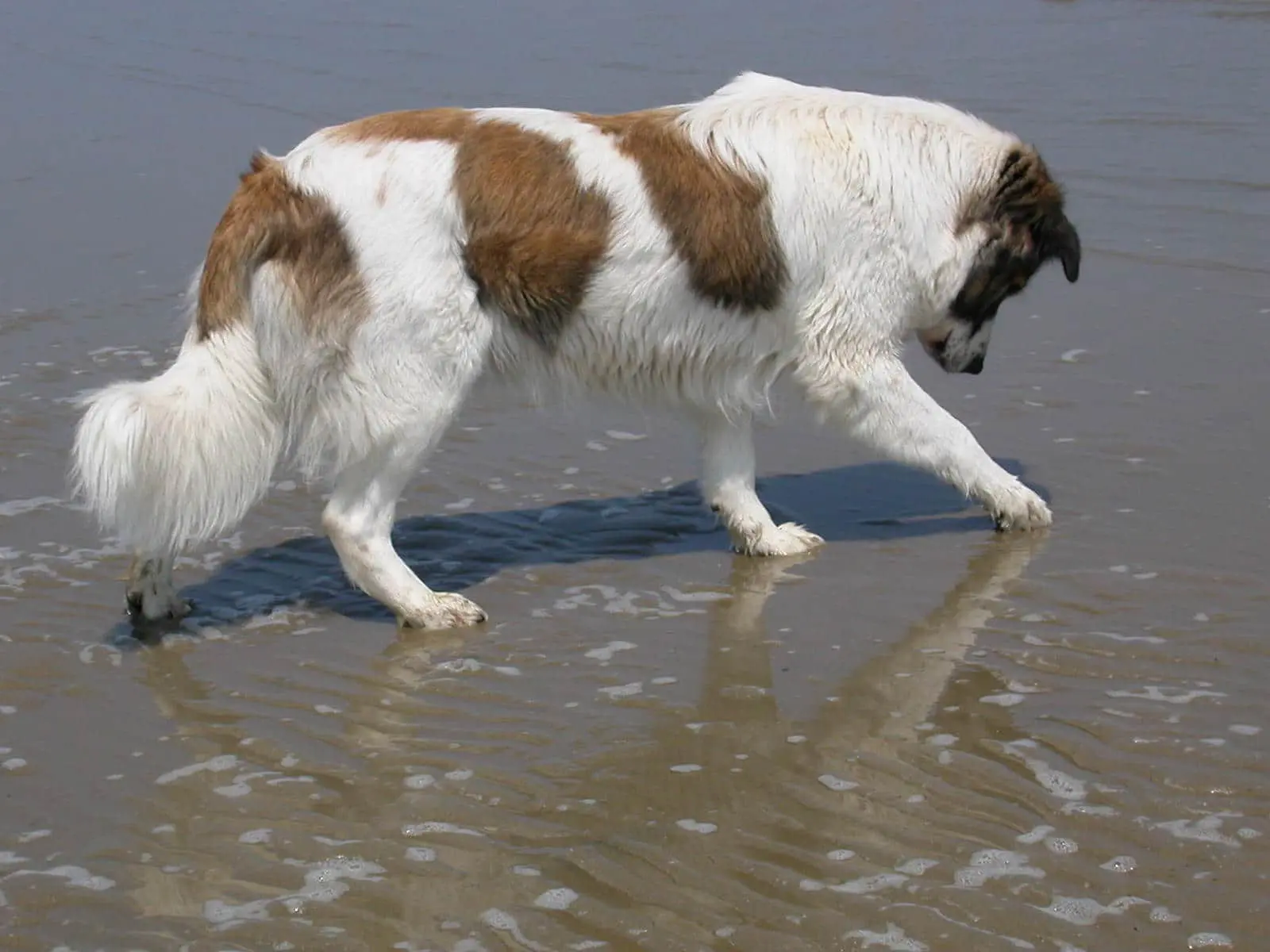
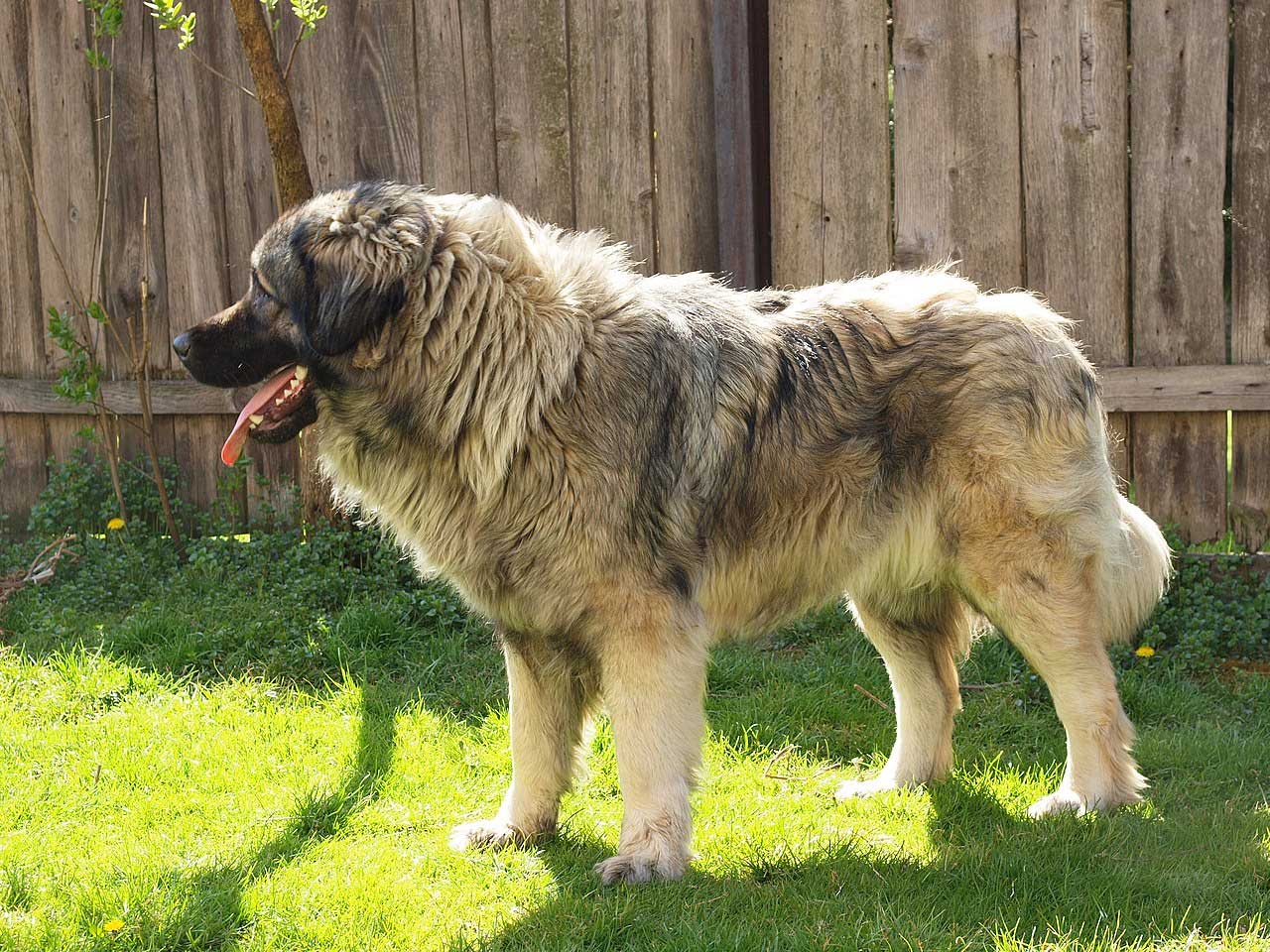

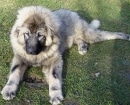
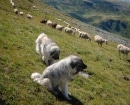

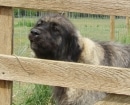

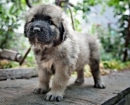
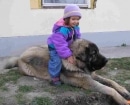
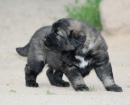


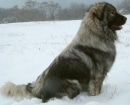
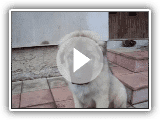 Sharplaninac
Sharplaninac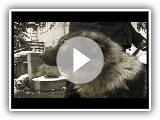 Sarplaninac puppies :: www.sarplaninac-kennel.tk
Sarplaninac puppies :: www.sarplaninac-kennel.tk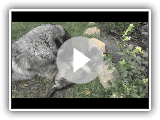 SARPLANINAC – PUPPIES 7 WEEKS OLD.m2ts
SARPLANINAC – PUPPIES 7 WEEKS OLD.m2ts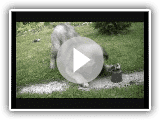 Sharplaninac puppies.
Sharplaninac puppies.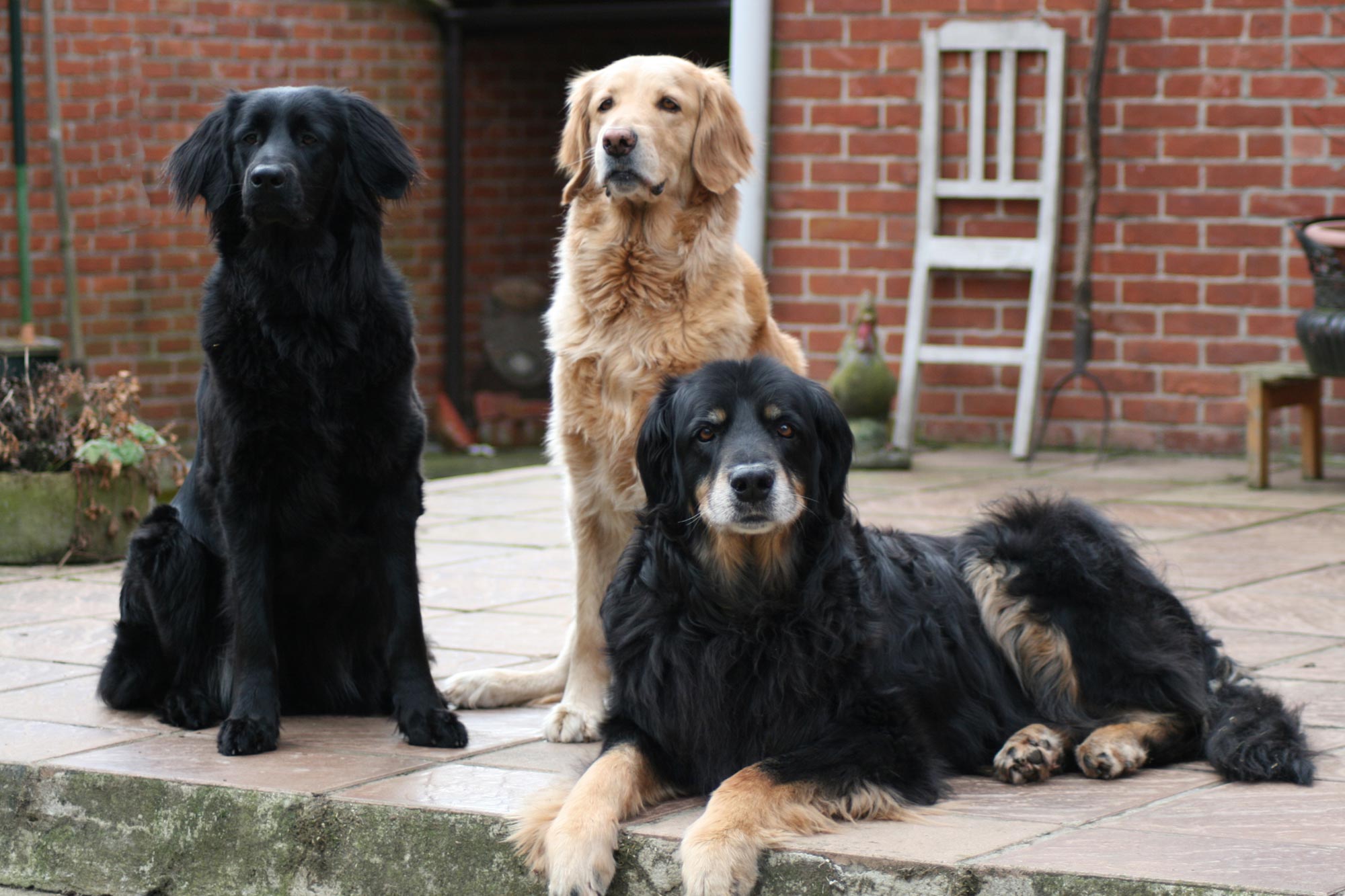
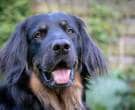
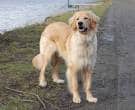
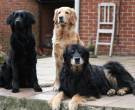
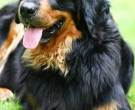
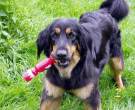
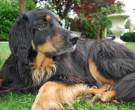
 Hovawart – Breed of dog
Hovawart – Breed of dog Hovawart Odin’s World, part 1
Hovawart Odin’s World, part 1 Hovawart Odin’s World, part 2: Odin and friends
Hovawart Odin’s World, part 2: Odin and friends Hovawart Odin’s World part 4: Vacation with friends
Hovawart Odin’s World part 4: Vacation with friends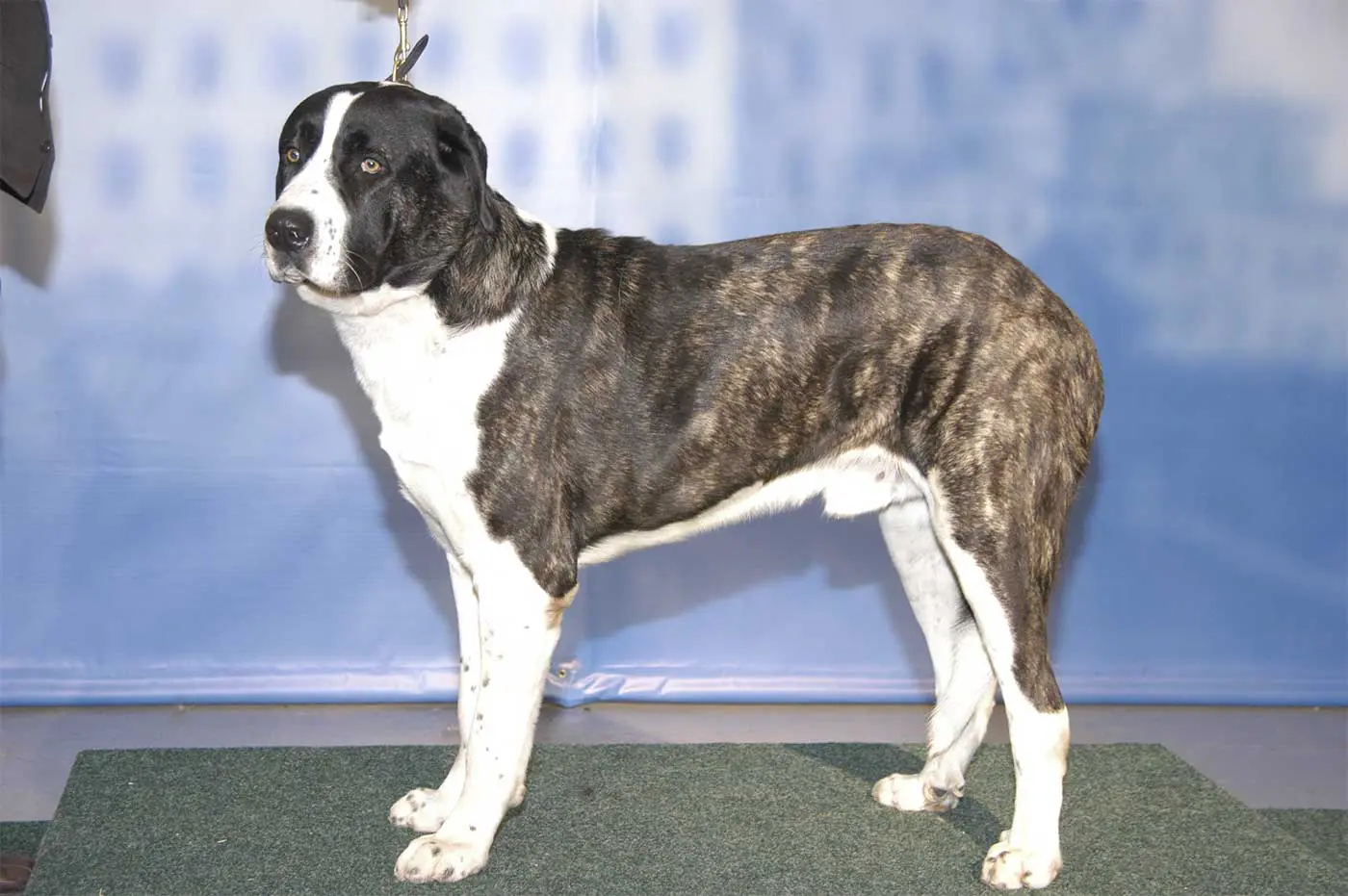
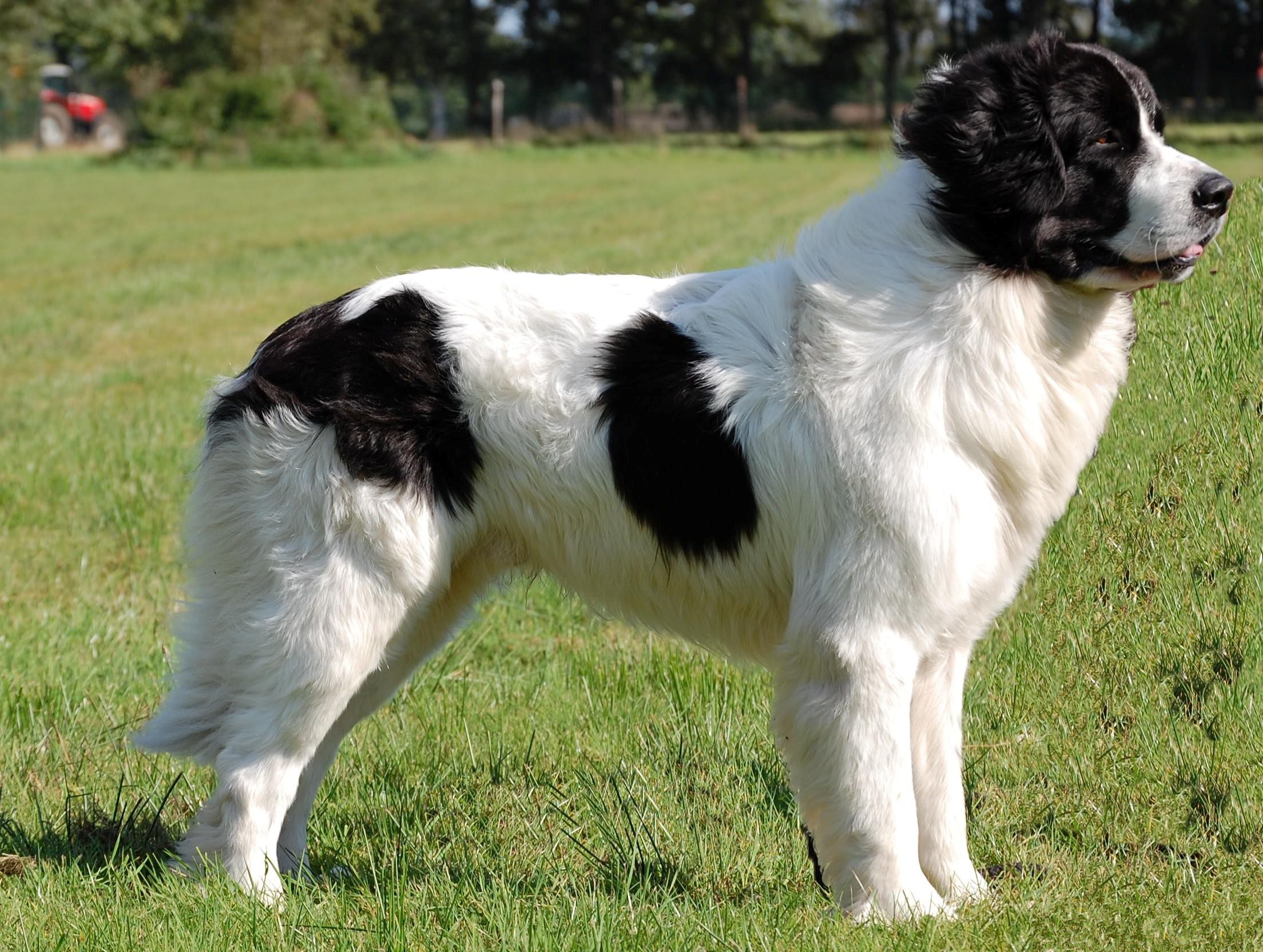
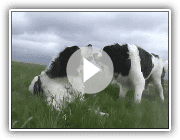
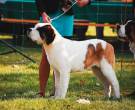
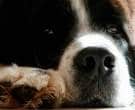



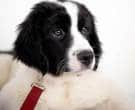
 Landseer – Breed of dog
Landseer – Breed of dog![Landseer [2019] race, Looks & Nature](https://www.mascotarios.org/videos/landseer/index_videolb/thumbnails/1.png) Landseer [2019] race, Looks & Nature
Landseer [2019] race, Looks & Nature Landseer
Landseer Rocky,Otto and Augustus the landseer swimming
Rocky,Otto and Augustus the landseer swimming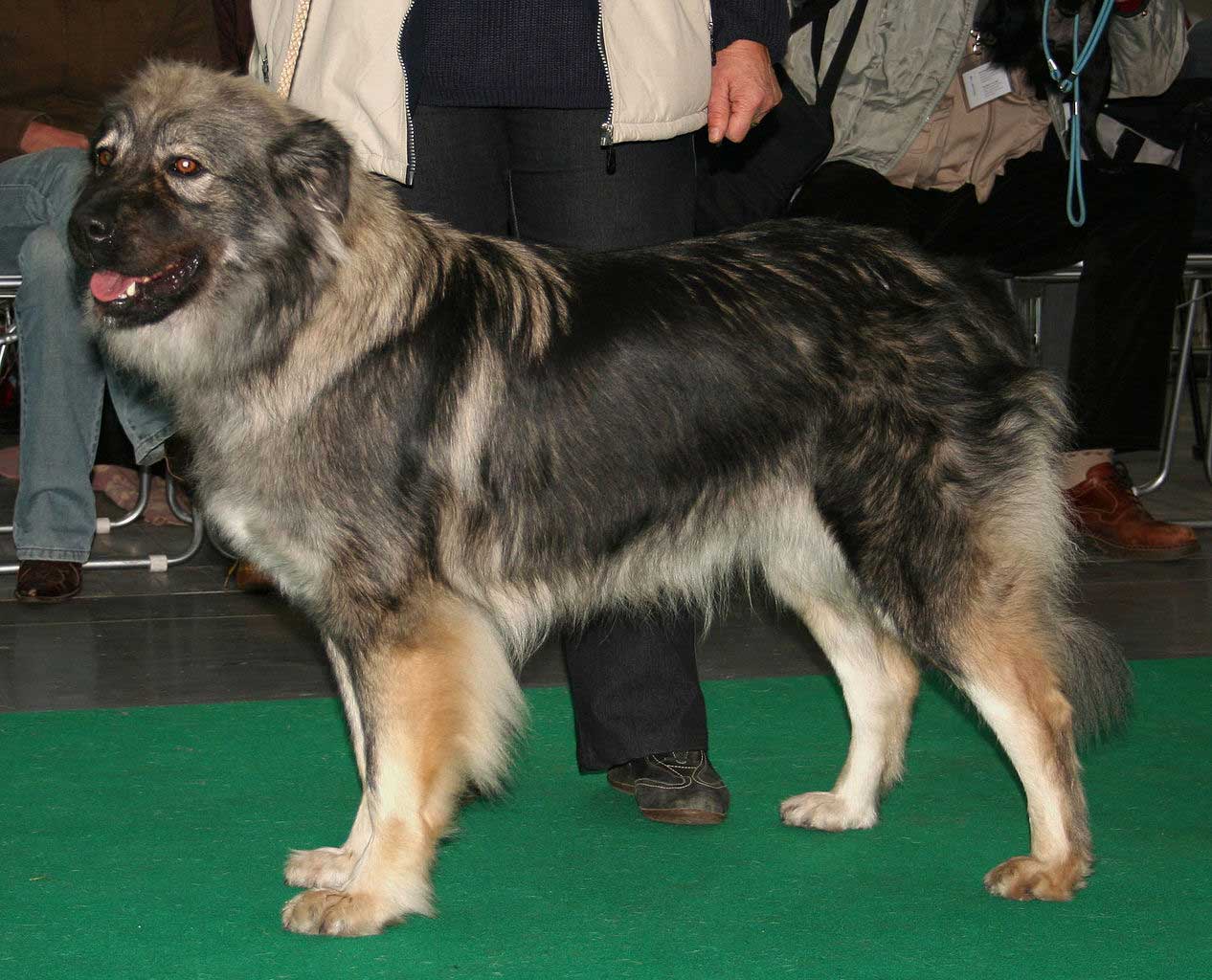

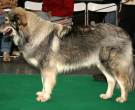
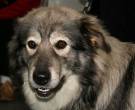
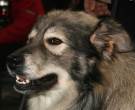
 Karst Shepherd Dog
Karst Shepherd Dog Crack an egg / Karst Shepherd: A day at the show
Crack an egg / Karst Shepherd: A day at the show Karst Shepherd / Karst Shepherd Dog / Breed of dog / Dog Breed
Karst Shepherd / Karst Shepherd Dog / Breed of dog / Dog Breed Karst Shepherd’s Training
Karst Shepherd’s Training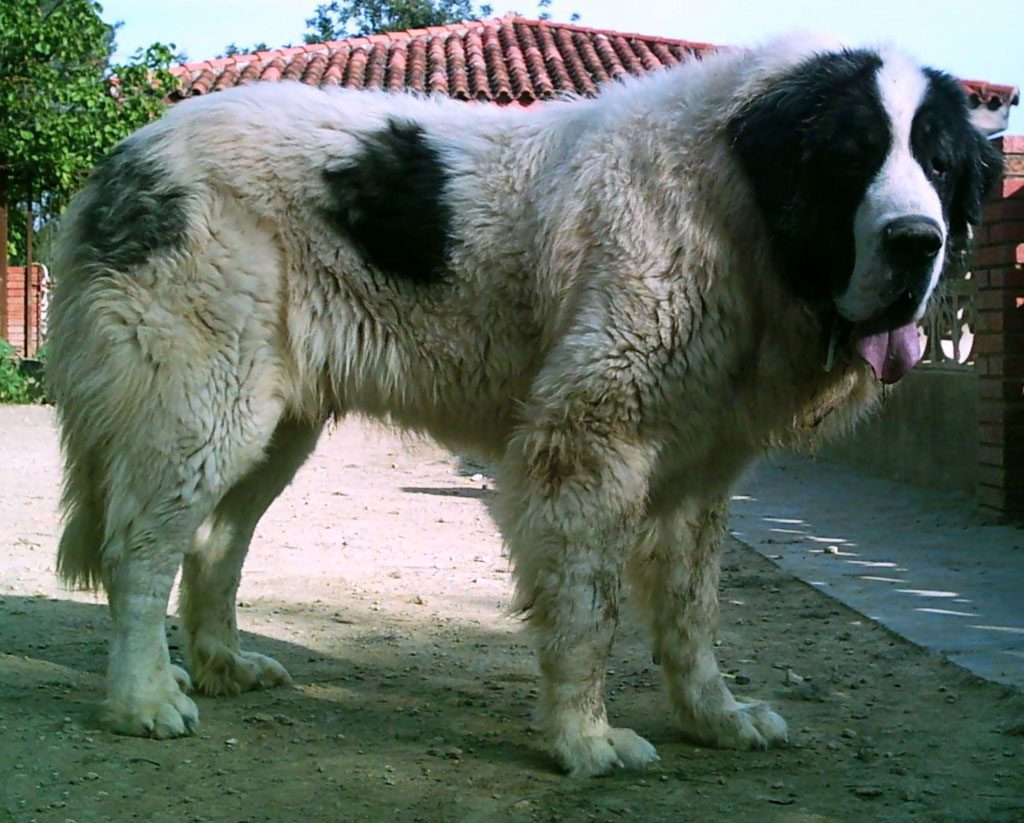
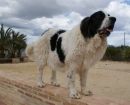
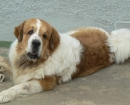
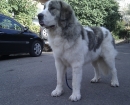
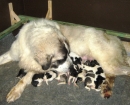
 MASTIN DE EL PIRINEO
MASTIN DE EL PIRINEO Yuri&Lara mastiffs of the Pyrenees
Yuri&Lara mastiffs of the Pyrenees Pyrenean Mastiff Remus
Pyrenean Mastiff Remus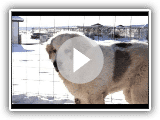 Pyrenean Mastiff Puppy Winter
Pyrenean Mastiff Puppy Winter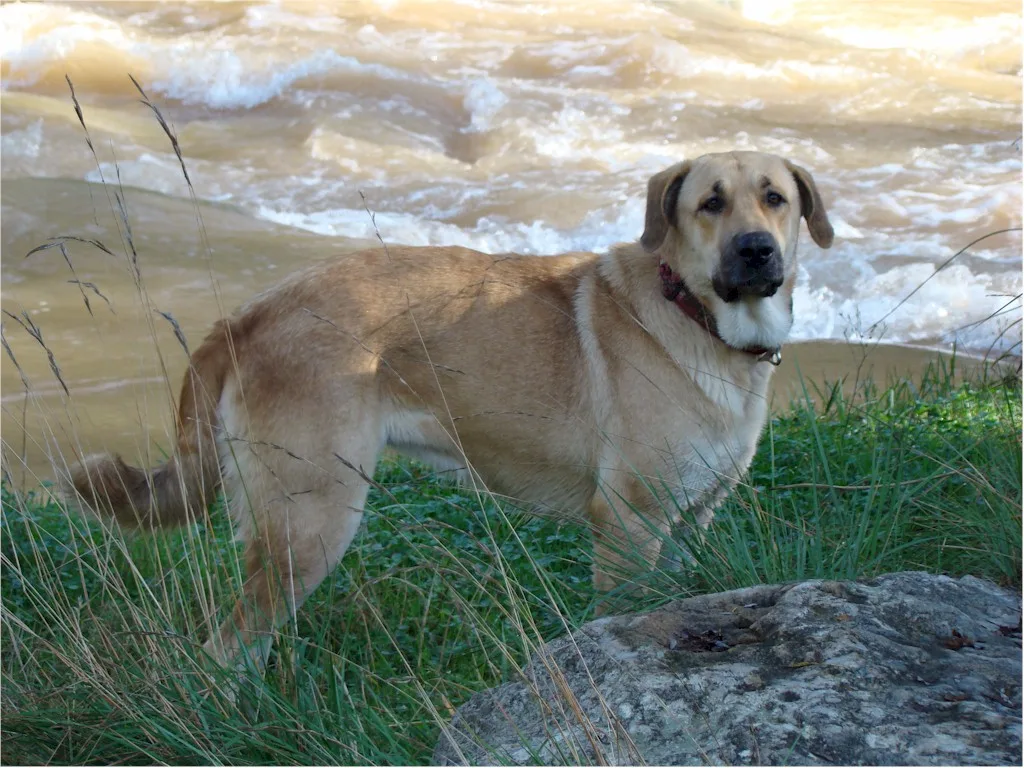
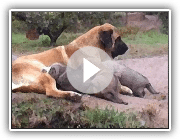
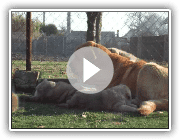
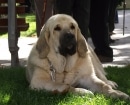
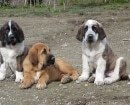
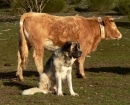

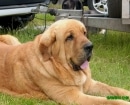
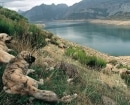
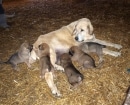
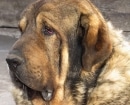
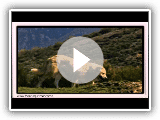 Powerful mastiffs
Powerful mastiffs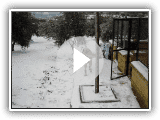 Spanish Mastiff in the snow
Spanish Mastiff in the snow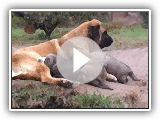 Spanish Mastiff. A noble race.
Spanish Mastiff. A noble race.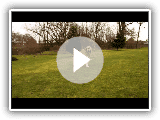 Mastin Spanish – Casto Torreanaz & Lupina Mastibe
Mastin Spanish – Casto Torreanaz & Lupina Mastibe